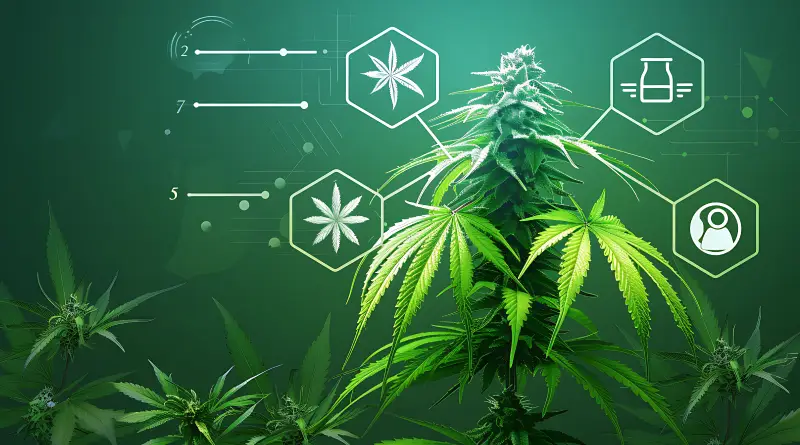10 Must-Try Marketing Strategies to Boost Your Dispensary Sales
From wellness CBD products to medical cannabis, the cannabis business is booming and a growing audience is ready to interact. On social media, developing a cannabis brand can be like negotiating eggshells, though. Many websites still forbid anything linked to cannabis even in areas where it is legal.
How then might you effectively promote your cannabis brand on social media without running across limited, shadowbanned, or outright erased policies?
This post will cover what you need to know from choosing the right platform and obeying community rules to building trust and involving an audience that actually converts.
Why Social Media is Crucial for Cannabis Brands
Social media is where today’s consumers live. Whether they’re looking for wellness solutions, recreational products, or education, platforms like Instagram, TikTok, YouTube, and LinkedIn are often the first place they discover new brands.
Here’s why it’s important:
- Brand awareness: It’s your storefront to the world.
- Engagement: Build relationships and communities around your products.
- Education: Educate your audience on the benefits, uses, and legality of cannabis.
- Customer support: Provide real-time answers and assistance.
- E-commerce traffic: Drive traffic to your compliant, off-platform store.
But the catch? Social media platforms heavily monitor and restrict cannabis content. You can’t advertise or post freely like other industries.
Step 1: Know the Rules of Each Platform
Instagram & Facebook (Meta)
Meta platforms are notorious for banning cannabis content – even for CBD.
What’s allowed:
- Educational content about cannabis laws, health benefits, or industry news.
- Images that don’t depict consumption or promote illegal sales.
- Advocacy and brand storytelling without explicit sales or pricing.
What’s NOT allowed:
- Posts promoting sales (“Buy now!” “DM for price”)
- Ads or paid promotions mentioning cannabis or CBD
- Links to product pages with restricted items
Tip: Always avoid using terms like “weed,” “marijuana,” or “THC” in your captions. Use substitutions like “plant medicine” or “green wellness” – but don’t be deceptive.
This is one of the best-kept secrets in cannabis marketing.
LinkedIn allows for B2B cannabis content, including product innovation, thought leadership, and legal business discussions.
Use it for:
- Connecting with industry professionals
- Sharing company news and blog articles
- Building personal authority as a founder or expert
Step 2: Build a Brand That Educates and Empowers
To stay in the clear, shift your focus from selling to educating.
Instead of saying:
“Buy our THC gummies now!”
Say:
“Here’s how cannabinoids interact with the body – and how they might support sleep.”
This helps in three ways:
- Adds value to your audience
- Avoids getting flagged
- Positions your brand as trustworthy
Types of Educational Content That Works:
- Cannabis 101: What is CBD, THC, terpenes, etc.?
- Benefits-based posts: Sleep, anxiety relief, focus, etc.
- Legality updates: State or country-specific laws
- User guides: How to choose a product (without showing it)
- Behind the scenes: Ethical sourcing, lab testing, staff stories
Step 3: Use Visuals Smartly (But Carefully)
Images are powerful, but they’re also where many brands get caught.
Do:
- Use lifestyle photos (people outdoors, meditating, smiling, relaxing)
- Show products in a wellness or natural setting
- Feature your team or culture
- Create infographics or carousels with educational content
Don’t:
- Post up-close images of buds or joints
- Show anyone smoking or consuming
- Display price tags or call-to-actions like “click to buy”
Pro tip: If your product images get flagged, use illustrations, animations, or indirect representations instead.
Step 4: Focus on Storytelling and Brand Values
People buy from brands they trust, and trust is built through authenticity – not aggressive selling.
Tell stories like:
- How your brand was founded
- What challenges you’ve overcome in a regulated industry
- Customer testimonials (in compliance with laws)
- Your commitment to sustainability, health, or social equity
Why it works:
Storytelling builds emotional connection and keeps you in the green zone of platform guidelines.
Step 5: Build and Use a Compliant Website
Because you can’t rely on social media for sales, your website becomes the hub.
Use your bio links (on Instagram, LinkedIn, etc.) to drive people to:
- A compliant product store
- An educational blog
- An email newsletter signup
- A community platform or private group
Platforms like Linktree, Later’s Link in Bio, or Tap.bio help you create bridge pages without linking directly to cannabis product listings (which can get you flagged).
Step 6: Master Email and SMS Marketing
Once you’ve attracted your audience, move the conversation off social media.
Use social media to grow your email and SMS list:
- Offer a free guide or discount in exchange for email
- Create gated content or webinars
- Ask followers to sign up for updates due to social limitations
Email and SMS are owned channels – they’re not policed like Instagram or Facebook. You control the message.
Step 7: Work with Cannabis-Friendly Influencers and Creators
Influencer marketing still works – but choose partners wisely.
Look for:
- Influencers already working in health, wellness, or plant-based living
- Micro-influencers (1,000–10,000 followers) with loyal audiences
- People who understand the risks and don’t oversell
- Ask them to focus on brand lifestyle and storytelling, not product pitching.
Step 8: Stay Updated with Policy Changes
Social media policies change constantly – and cannabis policies even faster.
Stay informed by:
- Following platforms policy pages
- Subscribing to cannabis marketing newsletters
- Joining cannabis business groups on LinkedIn or Reddit
- Working with compliance experts or agencies
Bonus Tips to Avoid Getting Banned
Here are some additional ways to stay safe:
- Use slang carefully: Avoid banned hashtags and slang terms like #weed or #420.
- Watch your DMs: Avoid selling or making transactions in private messages.
- Disclose age limits: Add “21+ only” or appropriate disclaimers in bios.
- Diversify your platforms: Don’t rely on one channel. Use a mix of Instagram, email, blog, YouTube, etc.
- Backup your data: Save content regularly in case your account gets suspended.
Conclusion
Building a cannabis brand on social media is 100% possible – if you play the long game. Instead of trying to “hack” the algorithm or skirt the rules, focus on adding value, building trust, and guiding your audience to a safe and informative experience.
The goal isn’t just to sell – it’s to build a loyal community around your brand.
So go ahead – share your message, educate your followers, and shape the future of cannabis culture. Just do it smartly, legally, and creatively.











Leave a Reply